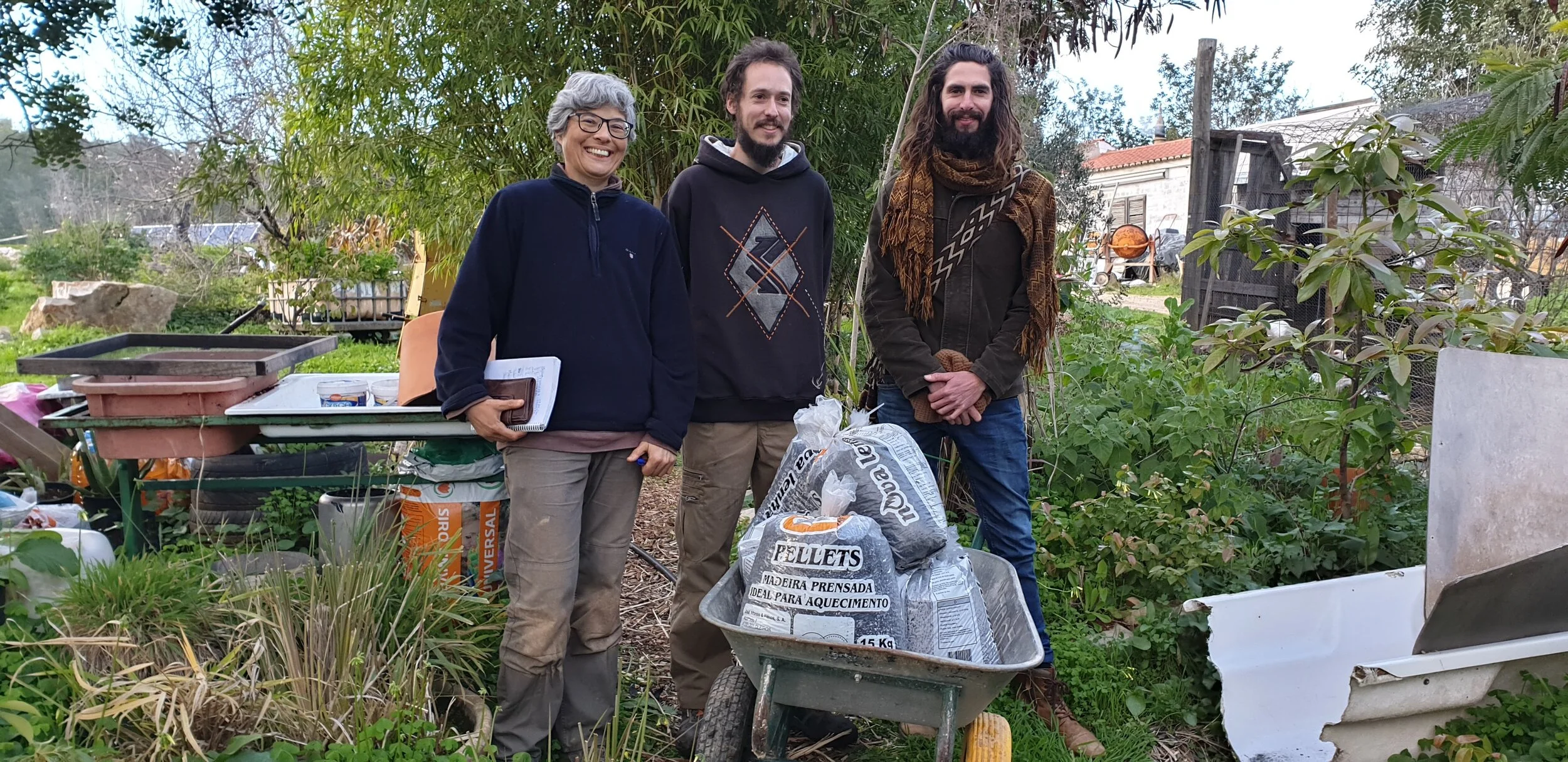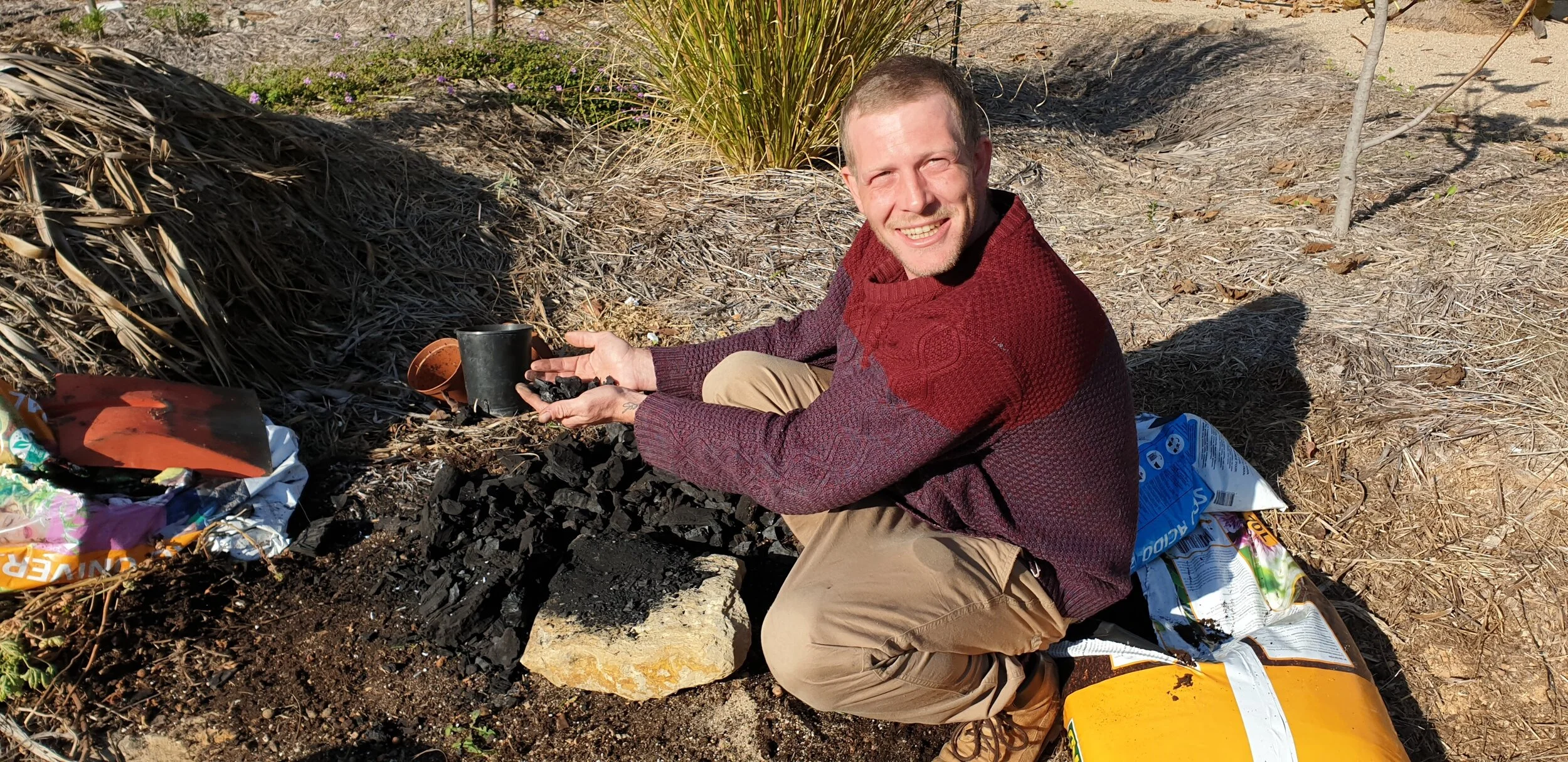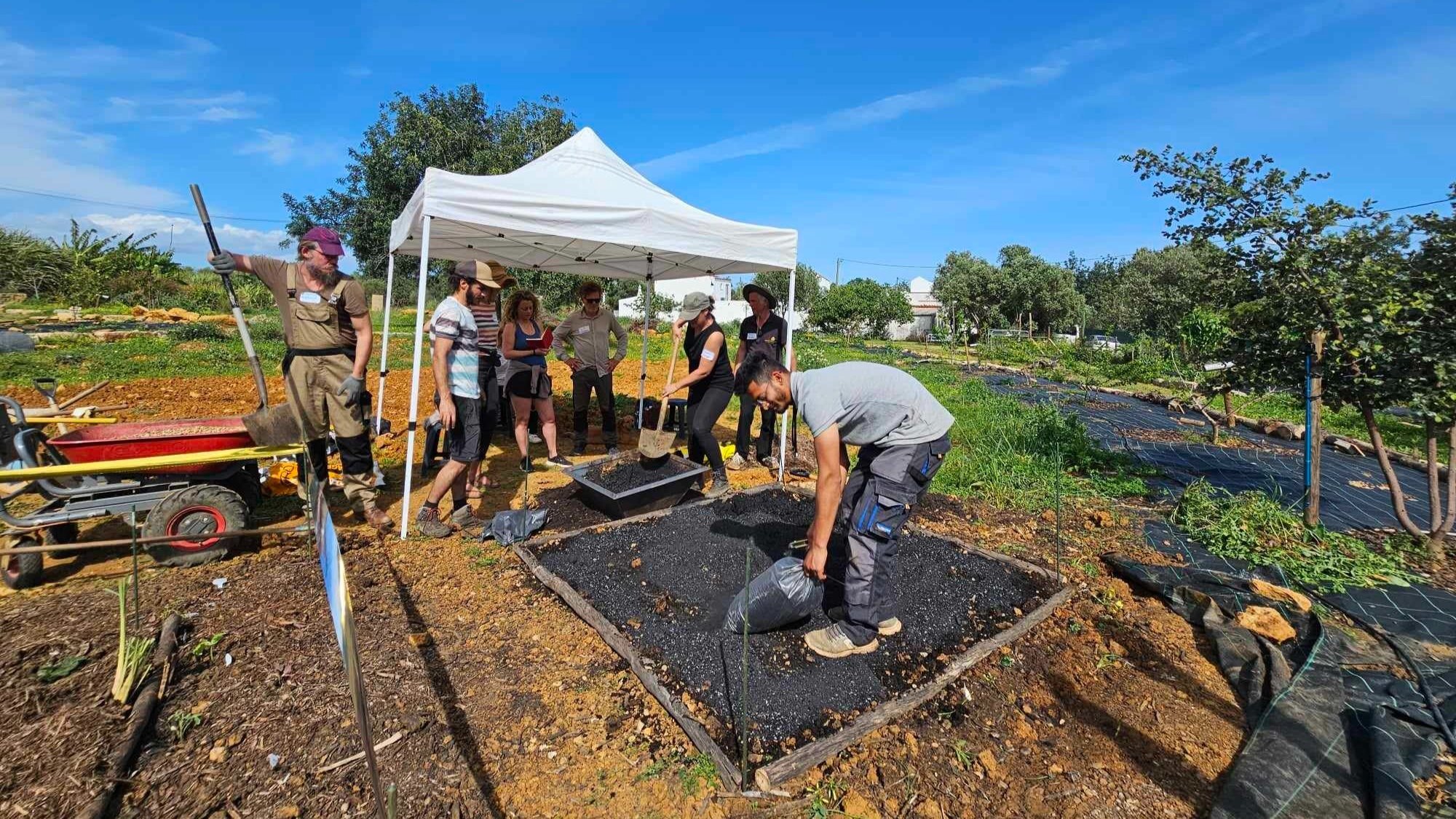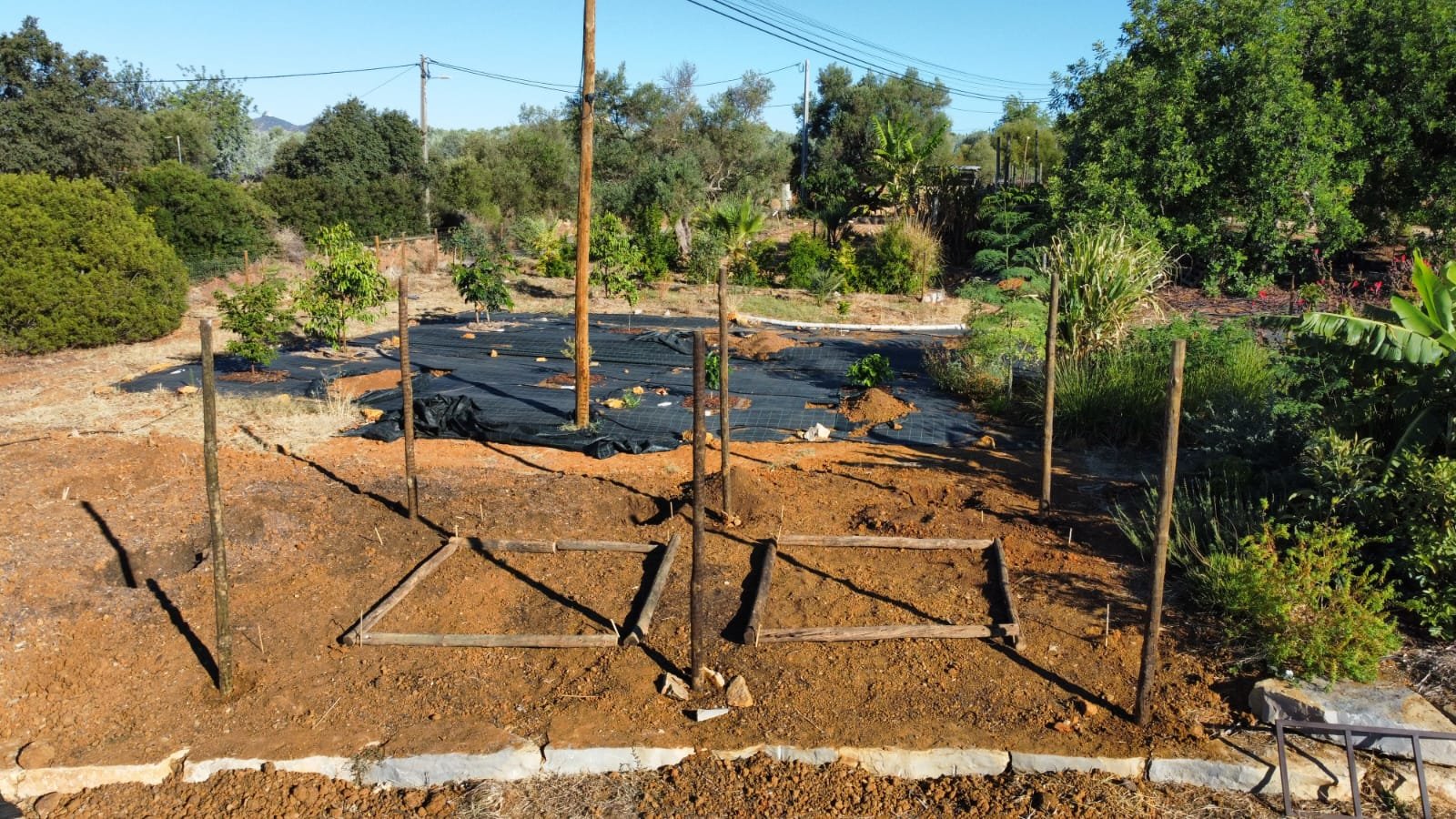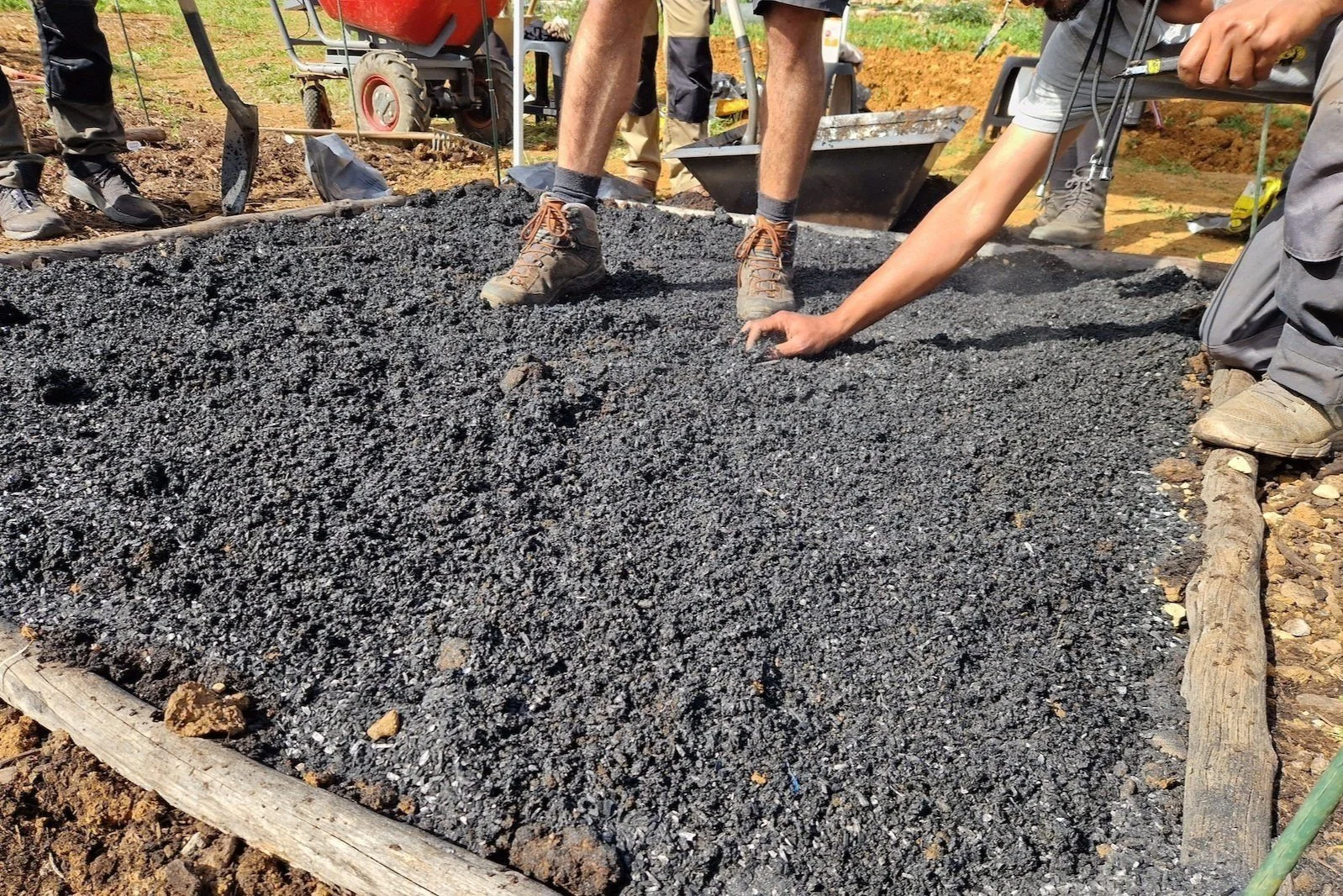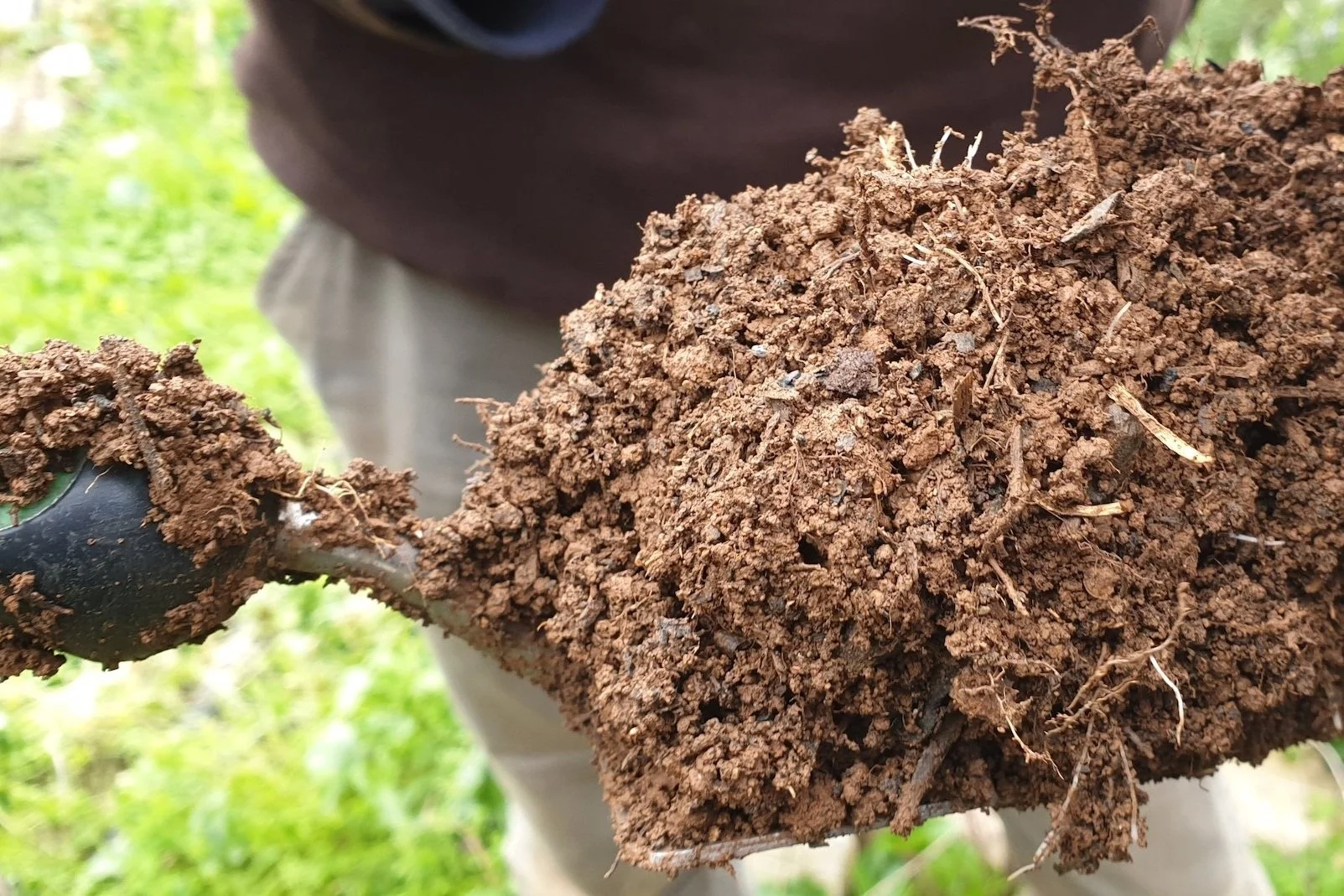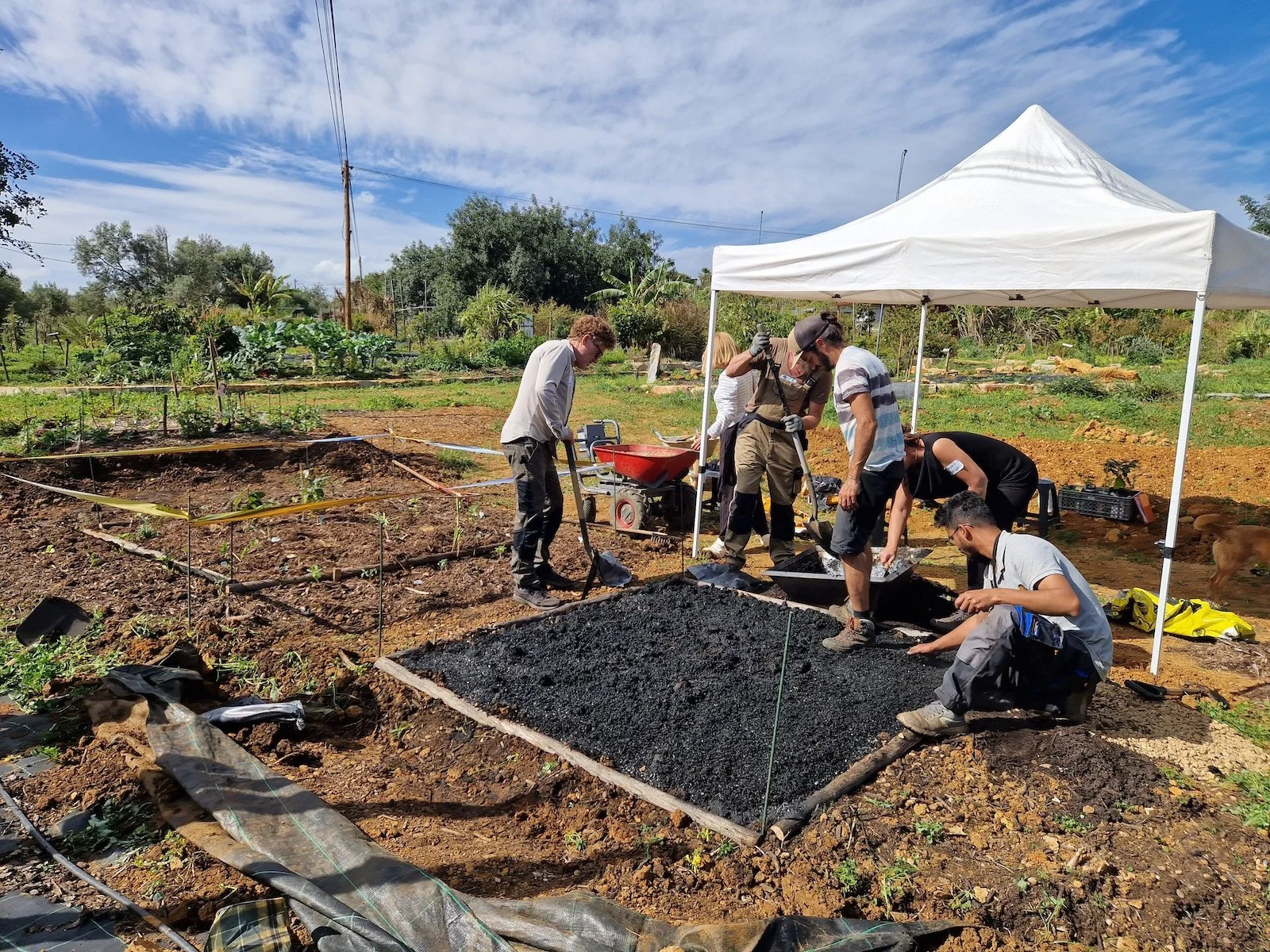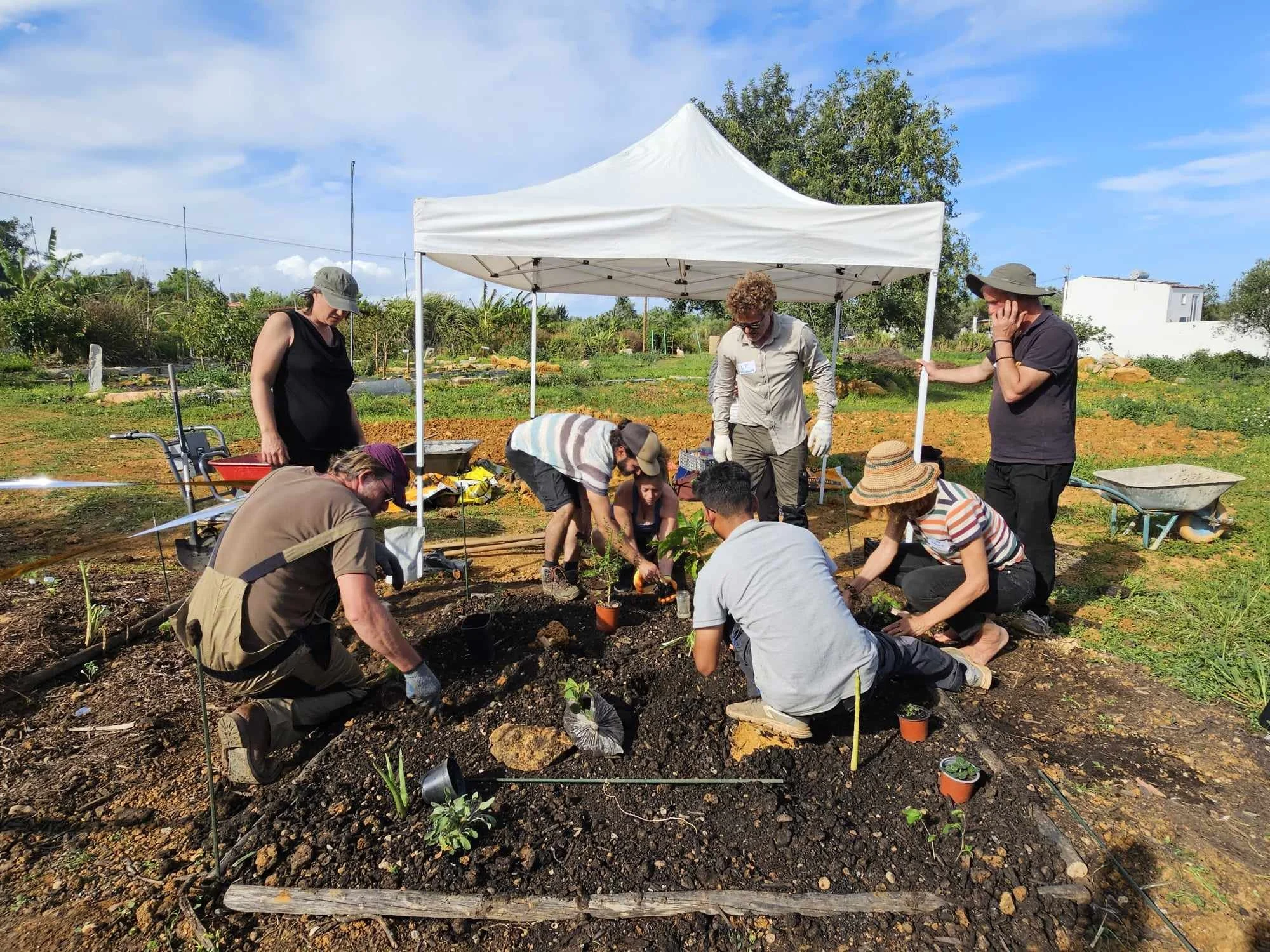Biochar
(now featuring our latest biochar controlled experiment, started in April 2024)
In April 2024, we updated this Learn article with a complete description of the Orchard of Flavours Biochar controlled experiment. Read about it now.
What is biochar?
Biochar is a charcoal that’s made by burning organic material from agricultural and forestry wastes (also called biomass) in a controlled process called ‘pyrolysis’.
During pyrolysis, organic materials, such as wood chips, leaf litter or dead plants, are burned in a container with very little oxygen. As the materials burn, they release little to no contaminating fumes. During this process, the organic material is converted into biochar, a stable form of carbon that can’t easily escape into the atmosphere. Biochar is therefore a stable way of carbon storage in the ground for centuries.
In terms of physical attributes, biochar is black, highly porous, lightweight, fine-grained and has a large surface area.
An ancient Amazonian practice
Pre-Columbians Amazonians produced biochar by smoldering agricultural waste (i.e., covering burning biomass with soil) in pits or trenches. It is not known if they intentionally used biochar to enhance soil productivity. European settlers called it “terra preta de índio” or “Indian black earth.”
Our excursion to Martijn Jager’s ‘Permaculture Playground’
Our curiosity about biochar led us to Martijn, who is a local producer in Algarve. Martijn is a biochar expert and a project manager at Permaculture Playground (now Carbon Conscious Creations). He had a lot of interesting information including some experimental plots with different ratios of biochar and native soil. He also gave us a demonstration of how he heats his home and cooks his food while producing biochar simultaneously.
We included some of the information Martijn provided us in this article.
He has since moved to Mexilhoeira Grande, near Portimão (still in Algarve), and changed the name of his project to Carbon Conscious Creations.
If you would like to contact Martijn directly for a demonstration or to purchase biochar, see his contact information below:
Carbon Conscious Creations website
Carbon Conscious Creations Facebook Page
Carbon Conscious Creations Instagram profile
Facebook Messenger: Martijn Macaopino
Benefits of Biochar:
Enhancing soil structure in clay soils, helping with aeration and compaction
Enhances moisture and nutrient holding capacity in sandy soils
Increasing water retention and aggregation (due to its porosity)
Decreasing acidity due to being alkaline in nature (elevates PH of the soil)
Improving microbial properties (a habitat for many beneficial soil microorganisms)
Charge it up!
Most research mentions the necessity to “activate” biochar with some kind of organic materials (manure or pee is often used). It allows biochar to set up a solid structure for all the micro-organisms in the soil to find a home.
Concentration of Biochar
This question is still very debated. A minimum dose would be 1 kg of bio char per square meter in the planting area mixed with natural soil. And you can go up to 10 kg of bio char per square meter.
The Orchard of Flavours Biochar controlled experiment - April 2024
Beginning in April 2024, we are conducting an innovative experiment to explore the benefits of biochar in enhancing fruit tree growth, in partnership with the Biggest Mini Forest and Carbon Conscious Creations projects.
This experiment involves two small-scale, square-shaped, food forests, which we call "Mini Forests'', each occupying an area of 4m². In these squares, we plant a variety of perennial edible species, and surrounding each of them we place a 0.5meter-wide border which we call the “veggies wall”. This consists of a ‘belt’ with a total area of 5m², which we plant with vegetables and other annual species.
You can read more about these Mini Forests on our Learn article about the “Miyawaki Experiment #4 — The Biggest Mini Forest”.
Applying a layer of biochar to the Mini Forest square in our April 2024 biochar experiment
Preparing two 4m² Mini Forest plots for planting
For our “Biochar Food Forest” experiment, we have added 20 kg of non-inoculated biochar to one of these two Mini Forests: 12kg to the 4m² area (perennial species) and 8kg to the 5m² area (veggies wall).
The other mini forest is used as a control and does not contain any biochar.
Both Mini Forests contain the exact same species in the exact same distribution, in order to be more conclusive.
Soil preparation details:
Both mini food forests had identical soil preparation methods. The existing soil is a red clay. The used preparation included:
Whole area:
º Decompaction of the soil down to one meter deep
º Addition of 20% plain compost to the existing soil
Perennial species area (4m²):
º Incorporation of one bag (70 liters) of pine bark humus (Siro Agro 1)
º Incorporation of one bag (70 liters) of mature horse manure compost (Siro Agro 2)
º 150 liters of river pebbles, to increase soil permeability
º 12kg of non-inoculated biochar (on the biochar experiment square only, naturally)
Annual species area (5m²):
º 1 liter of organic manure pellets of Biofuerza Fertinagro.
This meticulous preparation ensures that any differences in the growth of the two Mini Forests can be attributed primarily to the presence (or absence) of biochar.
Planting details:
Both Mini Forests were planted on the same date, April 6th 2024. The two have the same area: 4m² each, and then surrounded by a "veggies wall" which covers the additional area of 5 square meters.
The same species were planted on the two plots, making them as identical as possible. Here is a list of the perennial species and the heights (in cm) for the different plant seedlings, at the time of planting the two 4m² squares:
| Species | Plant height (cm) Biochar plot |
Plant height (cm) Control plot (no biochar) |
|---|---|---|
| Portulacaria afra | 10 | 12 |
| Fragaria x ananassa | (creeping) | (creeping) |
| Carica papaya | 33 | 28 |
| Coffea arabica | 30 | 43 |
| Arbutus unedo | 15 | 15 |
| Eugenia uniflora | 19 | 6 |
| Myrtus communis | 34 | 34 |
| Atriplex halimus | 15 | 10 |
By seed:
º Carica papaya
º Eryobotrya japonica
º Myrtus communis
º Celtis australis
º Moringa oleifera
By direct cuttings:
º Plectranthus ornatus
º Gazania rigens
º Cymbopogon citratus
º Bauhinia variegata
º Salvia officinalis
º Salvia elegans
º Aptenia cordifolia
º Morus alba
Data we will be monitoring:
To assess the impact of biochar on the plants development, we are monitoring specific growth parameters:
º Initial height at the time of plantation
º Height after one year, to measure growth performance.
By comparing these metrics between the two Mini Forests, we aim to better evaluate how much of an impact biochar can have in promoting plant growth.
🌳 💧 🪱
We believe the results of this experiment could significantly influence sustainable forestry practices, by showcasing a scalable solution for enhancing plant growth, soil health and water resilience in the face of today’s increasingly challenging conditions, through the use of biochar.
This article was compiled by Miguel COTTON, Jackson KNIGHTS & Miguel PEREIRA. If you have any questions or suggestions, do not hesitate to contact us at miguel@orchardofflavours.com


